10 Tips for Traveling With Celiac Disease
With a little extra planning, traveling doesn't have to be stressful.
Hey, everyone! I’m sitting here writing this newsletter from beautiful Buenos Aires, where I just spent the last week. (By the time you read this, I’ll be back home in cold, gray New York City.)
It was my first time in South America, and I couldn’t have picked a better place to explore with celiac disease. In addition to being a gorgeous city with major European vibes, there are so many gluten-free restaurants and bakeries here that I didn’t even get to scratch the surface in my few days here.
While on my trip, I couldn’t help but reflect on all of the traveling I was lucky enough to do this year. Over the summer, I spent three and a half weeks in Europe, visiting multiple cities in Italy (Milan, Bologna, Florence, and Rome) before heading to Barcelona, Paris, and Brussels.
I also went to Disney World and the Daytona 500, had a whirlwind weekend in Minneapolis to see Taylor Swift in concert, traveled to the Pacific Northwest on separate trips to Seattle and Portland, and spent a few days in Washington, DC, for a work conference.
It would be an understatement to say 2023 was a busy year! I’m not writing any of the above to brag—I just want you to know you can travel the world with celiac disease. Since being diagnosed in 2020, I haven’t let it hold me back.
I’ve now traveled internationally multiple times and have been to many states across the US for both leisure and work. Sure, it takes some additional planning to ensure my travels go smoothly, but it’s all been doable. Here’s what works for me when traveling—hopefully you’ll find it helpful too!
How to travel with celiac disease
1. Choose a gluten-free friendly destination
For people who are new to celiac disease, getting your feet wet by traveling somewhere that's easy to eat gluten-free is my number one tip. Over the past three years, I’ve generally visited places known for being very celiac-aware and gluten-free friendly.
This includes Italy and Spain, Seattle and Portland, Disney World, and most recently, Buenos Aires. (I would add my hometown of New York City to this list as well.)
When it comes to choosing where to stay, I prefer hotels over Airbnbs for a variety of reasons—including the fact that hotels abroad usually offer breakfasts with many naturally gluten-free options, including meats, cheeses, fruit, and yogurt.
If possible, I try to pick a hotel near a few gluten-free establishments. When I was in Paris, I stayed in the 6th arrondissement and was within a 5-minute walk of two dedicated gluten-free restaurants and a 15-minute walk of a gluten-free bakery.
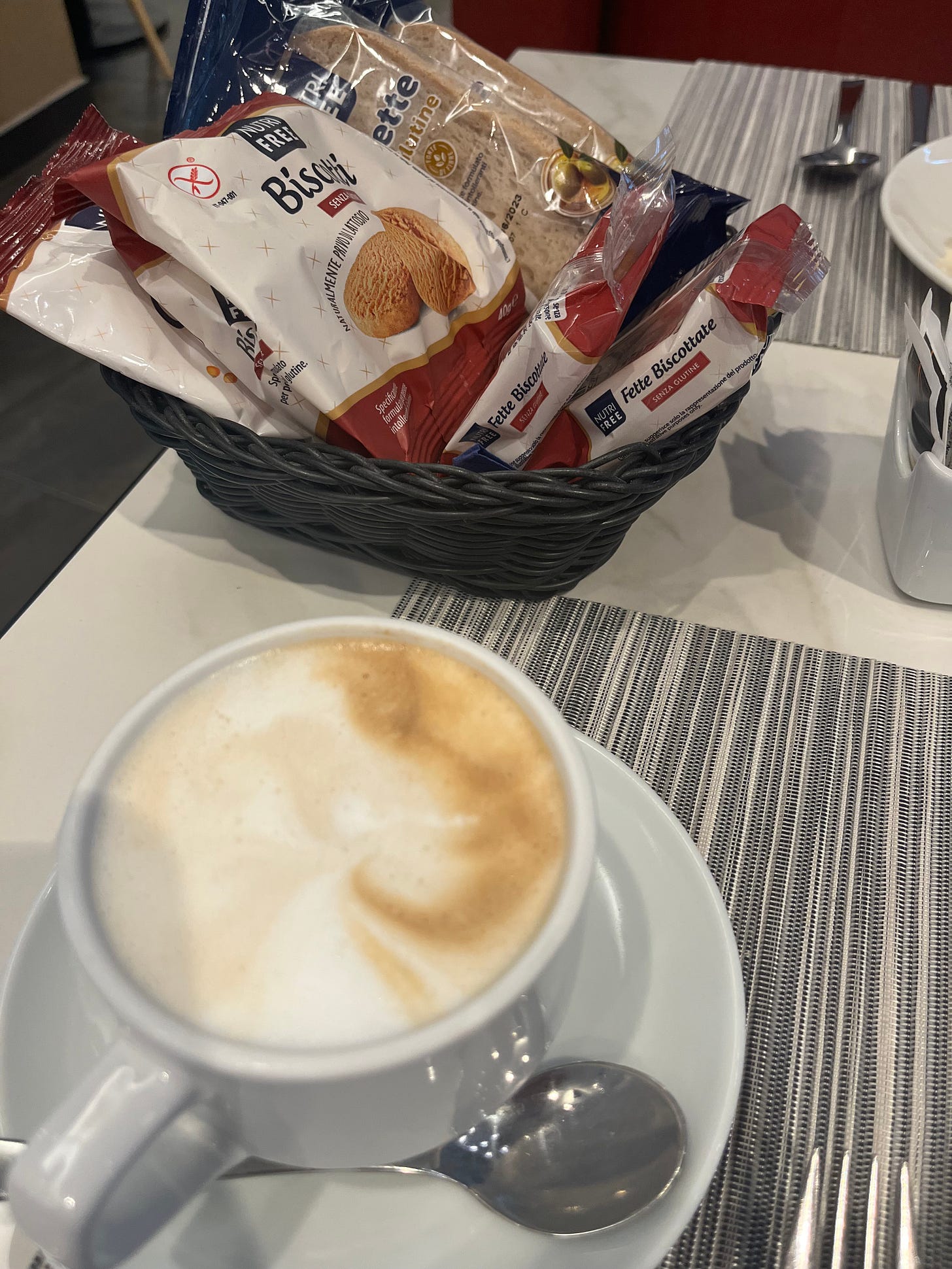
2. Contact your airline and hotel in advance of your trip
If I’m going to be taking an international flight, I make sure to request a gluten-free meal in advance. I’m a Delta girlie, and I haven’t been let down by them yet. You can request a special meal right on their app. I do this immediately upon booking my flights.
When making hotel reservations, I leave a note telling them I have celiac disease and asking if they have gluten-free options for breakfast. Every hotel I’ve stayed at in Europe (as well as the hotel I stayed at in Buenos Aires) has had gluten-free bread available at breakfast.
At my hotel in Bologna, the server at breakfast had it written down that I had celiac disease—so when I gave him my room number, he brought me a basket of gluten-free bread immediately and warmed up a gluten-free croissant (which was individually wrapped to avoid cross-contact) for me every morning.
3. Do your restaurant research beforehand—and make reservations ahead of time
I go into full-on research mode when planning a trip. I use various methods to find safe places to eat including apps, Facebook groups, travel blogs, and Instagram accounts.
Some of my favorites include:
Gluten Dude app
Celiac Travel Facebook group
Location-based celiac/travel Facebook groups (such as Gluten-Free Italy)
The Nomadic Fitzpatricks blog and Instagram account
Gluten-Free Globetrotter blog and Instagram account
Wheatless Wanderlust blog and Instagram account
Endless Distances blog and Instagram account
Celiac Sarah Explores on Instagram
As I read reviews and find places I’m interested in trying, I compile them in a Google doc, along with whatever activities I’m thinking of doing while I’m on vacation.
My first preference is to dine at dedicated gluten-free establishments. If that’s not possible, then I look for the next best thing, which would be non-dedicated restaurants that have celiac-safe practices. (It’s always a good idea to contact a restaurant in advance to confirm their cooking practices. Even if reviews are positive, things can change.)
Once I have a better sense of my itinerary, I start making a few reservations before I leave home. Popular restaurants tend to fill up fast—so if there’s somewhere I really want to go, then I make sure to book a meal well in advance to avoid disappointment.
Ahead of my trip to Portland in October, I set a reminder for myself to go on Resy when Kann (the award-winning gluten- and dairy-free Haitian restaurant run by Gregory Gourdet of Top Chef fame) opened its reservations for the month.
I ended up snagging a 9 pm dinner reservation on the last night of my trip. Had I not logged on exactly when the reservations opened, I would’ve missed out on one of the best meals I’ve ever had.
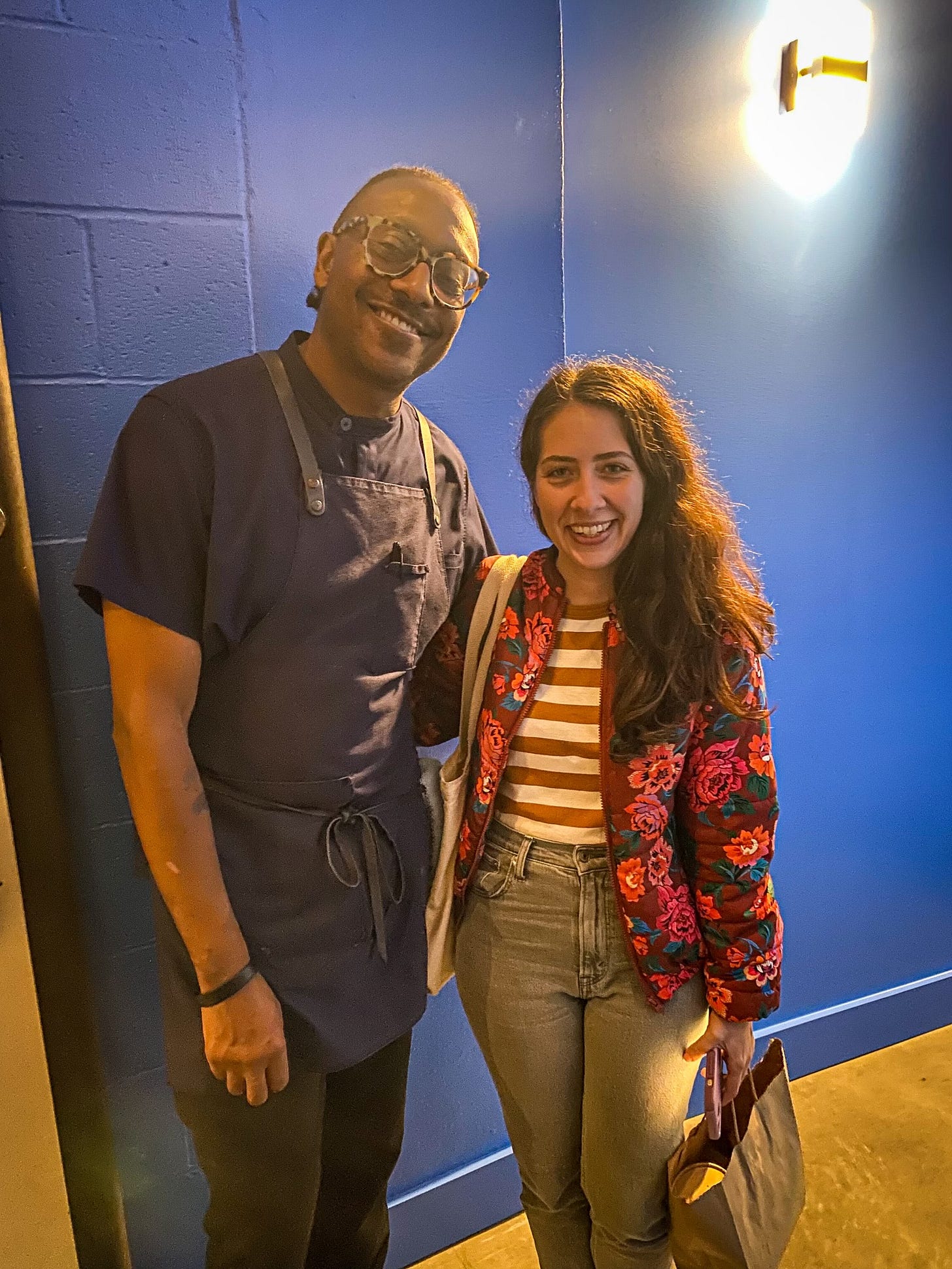
4. Find a supportive travel buddy—and communicate your needs to them
Traveling with celiac disease can already be complicated enough—so I think it’s important that you’ll be around people who are open to dining with you at celiac-safe establishments.
I usually travel with my partner, who lets me take the lead on choosing where we eat on vacation and sometimes is more excited than I am to try the off-the-beaten-path places I find. I admit, I have it pretty easy in this regard because I know not everyone’s spouse or family is as accommodating or supportive.
In August, I traveled with my best friend to Seattle. I asked if she would be open to me choosing some of our dinner spots since I can get anxious about dining out and was super appreciative that she was fine with me doing the planning.
We also split up and did our own thing on a couple of days—that way we could each do whatever we wanted, including for meals. This was a great compromise and a strategy I’d use again.
5. Buy a celiac translation card
If you’re traveling to a country that speaks another language, then I highly recommend purchasing a celiac translation card. This is a card that provides detailed instructions about your dietary restrictions, including what you can/can’t eat and how food should be prepared to avoid cross-contact.
I like the cards from Legal Nomads, a website founded by Jodi Ettenberg, who has celiac disease and a passion for travel. The cards go through two sets of translations, with at least one native speaker who is familiar with celiac disease.
You can show this card to the waiter so they can communicate your needs with the chef. I recently purchased a Spanish card for my trip to Buenos Aires because my Spanish language skills aren’t at a level where I could have this type of conversation on my own.
I didn’t end up needing the card on this trip because I stuck to dining at gluten-free restaurants, but I liked that I had it as a backup. I downloaded a digital version of the card and saved it on my phone so I didn’t even have to print anything out.

6. Pack plenty of snacks with you
I always throw some non-perishable gluten-free snacks in my carry-on just in case I need something quick and easy to munch on at some point during my trip.
This can come particularly in handy if you’re not able to find anything gluten-free at the airport or if you’ve got a full day of sightseeing planned and may not find yourself near a restaurant you can safely eat at.
Some of the snacks I like to pack with me include:
7. Take advantage of the local grocery stores
I don’t know about you, but I love seeing what local grocery stores have to offer. I’ve found so many yummy gluten-free treats across Europe (CarreFour is one of my favorite grocery chains over there).
Usually, one of the first things I do upon arriving somewhere new is to scope out a grocery store and pick up a few snacks to nosh on throughout my trip.
If my hotel room has a fridge, then I will also buy meats, cheeses, and a loaf of bread so that I can make and pack sandwiches for lunch. I go to a lot of sporting events while traveling with my partner—and most of those venues don’t have gluten-free options. If a venue allows spectators to bring food in, a sandwich is my go-to.
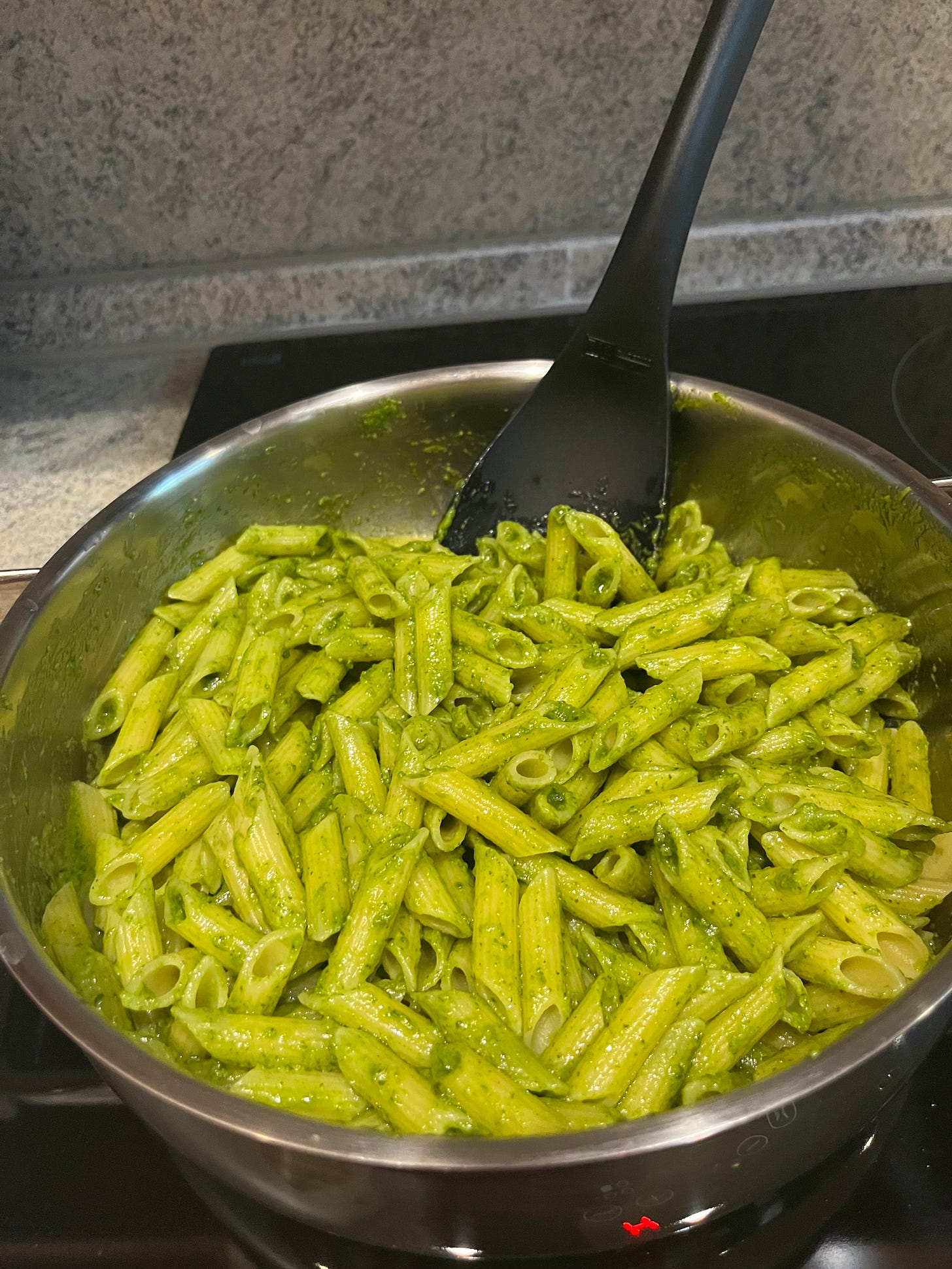
8. Be strategic about packing cookware
While I primarily stick to dining out when traveling, I acknowledge that sometimes cooking is necessary (and can even be enjoyable!). This is especially true if you’re going to be gone for an extended period.
Since I spent three and a half weeks in Europe over the summer, it wasn’t feasible to dine in restaurants every night. Plus, for part of my trip, I worked remotely during East Coast hours. That means during prime dinner time in Europe, I was in meetings—and I couldn’t exactly Zoom from a restaurant.
I booked an apartment-style hotel in Milan that had a kitchen for this part of my trip—that way, I could do some meal prepping in the morning and eat dinner at “home” while working.
I’ve read comments from some people online who say they bring their entire kitchen with them when they travel due to severe gluten anxiety—and I’m sure you’ve seen these comments too. But it’s simply not necessary to do this as long as you thoroughly clean the items first, either in a dishwasher or by hand.
There are only a few small items I’d suggest you pack with you (or buy when you get to your destination) if you’re planning on cooking for yourself while traveling:
A fresh sponge (since sponges can hold onto gluten)
A plastic cutting board or other small surface to use for cutting ingredients (since wooden cutting boards can hold onto gluten)
A collapsible pasta strainer (since colanders can hold onto gluten)
A silicone or metal pasta ladle (since wooden spoons can hold onto gluten)
Toaster bags (since toasters are a hot spot for cross-contact)
Depending on where you’re staying, you might be able to ask the host beforehand what they have in their kitchen so you can avoid overpacking.
9. Be open to new food experiences
In general, I’m pretty much down to eat any type of food, as long as I can confirm it’s gluten-free and prepared safely. I believe this openness makes for a much better travel experience with celiac disease—and has personally led me to some pretty fantastic meals.
Instead of being disappointed by what I can’t eat, I try to focus on all the delicious things I can eat while on vacation.
As I was planning to spend a week in Paris this summer, I kept coming across posts in celiac travel Facebook groups expressing disappointment over the lack of gluten-free options there. As I read between the lines, what I realized was that these people were disappointed at the lack of gluten-free traditional French food.
It turns out there are actually tons of dedicated gluten-free restaurants in Paris—but they don’t necessarily serve traditional French cuisine. Instead, you can more easily find Italian food, Thai food, vegan food, etc.
I went in with an open mindset to try different types of cuisines in Paris, which led to quite a few memorable meals. One of my favorite dinners was at Mimi Cave a Manger, a hidden gem of a gluten-free Italian restaurant run by a celiac chef. The homemade gluten-free bread was some of the best I’ve ever had!
10. Allow time for self-care
Traveling in and of itself can be exhausting—and when you add celiac disease to the mix, this can be even more true. That’s why I always prioritize self-care.
What does self-care look like for me while traveling? For starters, I like to make sure I’m staying hydrating, getting eight hours of sleep, and limiting the amount of time I spend on my phone checking social media or work emails.
Beyond that, I also like to carve solo time into my itinerary. During this time, I might treat myself to a facial or massage at a local spa, take a yoga class at a boutique studio, sit in a café with a matcha latte and read a book, or wander around a cute neighborhood and do some shopping.
Itching to book a trip to one of the locations I visited this year? Stay tuned for next week’s newsletter—I’ll be sharing a recap of all the gluten-free restaurants and bakeries I went to while traveling in 2023 (and I’ll share my hotel recommendations too)!
Disclaimer: If you click on a link, I may get a small commission. This helps support this newsletter so I can keep writing it.



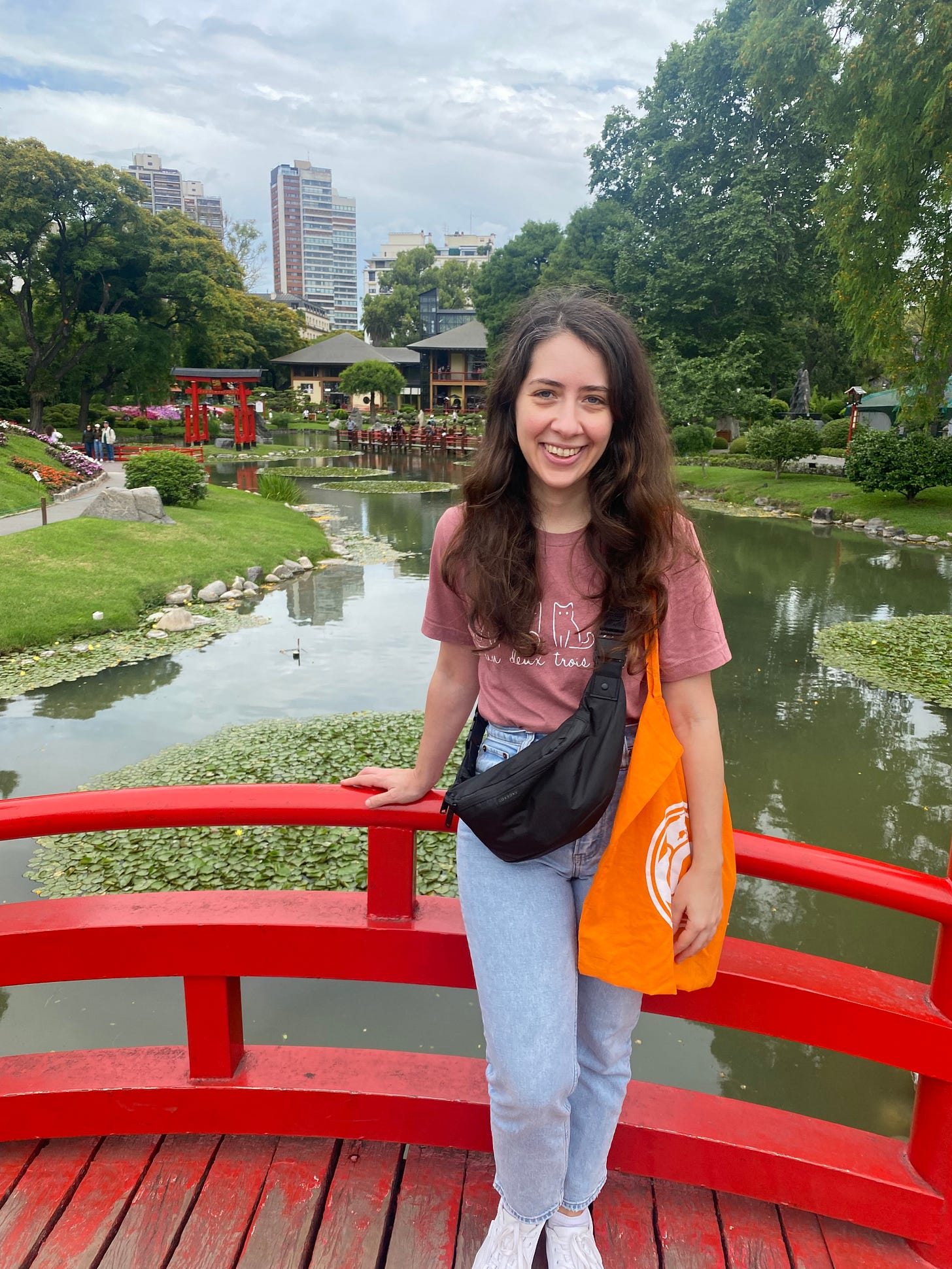
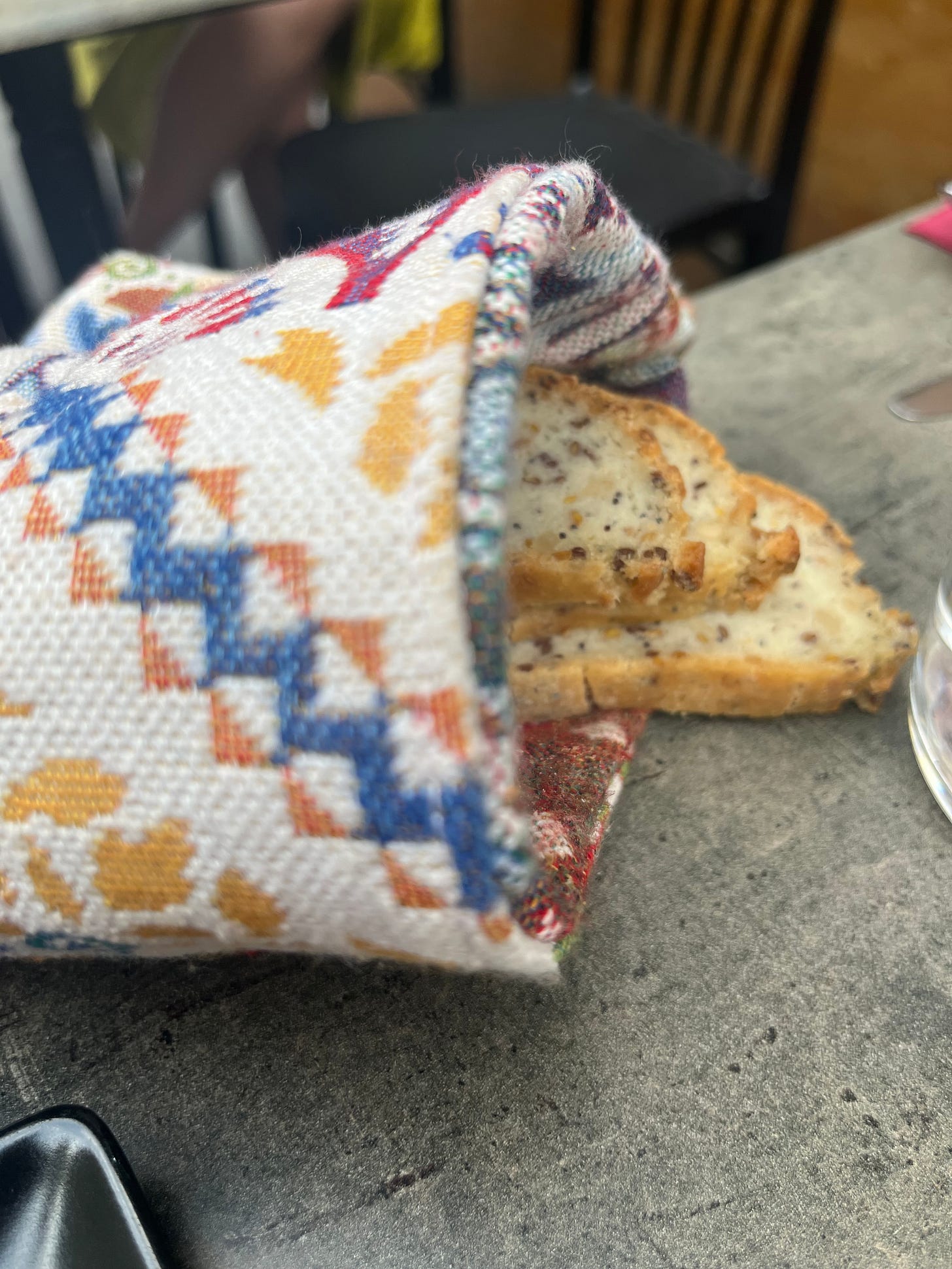
Can you develop a bit on how you have found Italy to be pretty celiac friendly ?
I have been avoiding going to Italy since I stoped eating gluten for obvious reasons.. (pizzas, pastas, lasagnas..) I would be so glad to hear of your experience and be able to go again ;)